The Last Frontier, the 49th state, land of the midnight sun, or in other words, Alaska. The state many dream to visit and few actually do.
Alaska is home to some of the world’s most beautiful natural wonders: the arctic and associated tundra, North America’s tallest mountain (Denali), megafauna ranging from muskox to polar bears, glaciers giving rise to cold, fast rivers, and gold. The land of extremes, some might say, and with those extremes, there are hidden treasures and surprises abounding.
One of these surprises is the sheer abundance and variety of berries in the summer and fall.
Alaska is home to around 50 different species of berries, most of which are edible — although not as many are delectable. For centuries, indigenous people of Alaska, along with many wildlife species, have lived off these berries, creating jams, jellies, syrups, chutneys, and sauces, or simply eating them raw. Many of these berries can be found in the Pacific Northwest at large, and some of them, across the continent.
This article will be covering 15 species of berries that grow abundantly in Alaska.
Cloudberries
Commonly described as similar to apple, this berry may be more of an acquired taste. From my experience (and those around me), some of these berries give off an apple flavor, but when they do, it’s more like a fermented apple pie.
Every plant stalk grows one berry, and it grows straight up above the leaves, presenting for any who may pass by. It’s easily identifiable, even without the berries, because the leaves have a distinct, ribbed-vein appearance and are rather scabrous (like sandpaper) in texture. The only berry this could be confused with is salmonberries. Salmonberries are also found in Alaska and I’ve been told that they taste delicious, though I haven’t had the pleasure of trying them yet.
Bunchberries

It would be a challenge to say which berries are the most common in Alaska. In terms of sheer presence, I would hazard a guess that bunchberries are close to number one on that list. These berries have a distinctive appearance based on their foliage alone. The leaves grow opposite each other, and often in pairs of 2 to 3 that grow with parallel venation. When the berries begin growing, they look like cloudberries and grow straight above the leaves. Unlike cloudberries, bunchberries grow in a bunch (hence the name). They are red with a white inside.
Bunchberries have a mildly sweet flavor, but are more mealy than anything else. In the fall, the leaves turn from green to red to deep purple and dot the landscape with gorgeous colors. The red berries complement the purple leaves.
Soapberries and Buffaloberries

As the name soapberry implies, this plant is not particularly delicious, and in fact, most Alaskans consider it inedible. However, some eat the berries after carefully preparing them as a jam or relish. Indeed, this plant is quite bitter, and to me, reminiscent of nail polish remover. It was used as a tool, creating soaps with the berries and roots. Some used the red berries to make dyes, too. I’ve often used this plant to fool friends into eating it — though I always made sure another delicious berry was readily available for them to cleanse their palate afterward.
Silverberries
This berry also has a mealy consistency and is rather flavorless, so you may not have much of a desire to eat the berries. Some considered them inedible and would only eat them in times of famine. Others regularly ate them as part of their diet. As the name implies, they are silver in appearance and aesthetically pleasing. Some indigenous groups used this plant to create heavy smoke.
Lingonberries and Lowbush Cranberry

I find these berries to be delicious! Unlike the highbush cranberry you’ll read about shortly, this one tastes like a classic cranberry. Even the berries left over from last season are yummy. The skin holds on and it gives a sweet and tart flavor.
Overall, this plant grows in mats on the ground and is nearly everywhere around Alaska. New season berries don’t ripen until after the first hard frost hits. They are more of a cold weather berry.
Highbush Cranberry, Mooseberry, Squashberry

This berry has several names, as you can see, and is extremely common. Close to the end of fall, you’ll see these bright red berries (usually accompanied with bright red leaves) growing abundantly. The taste, as with cloudberries, seems to be hit or miss. Some are quite tasty, though perhaps a bit sour, while others are bitter and leave your mouth feeling acidic. The tasty ones usually have a bit of “zing” to them, but are sweet overall.
These berries are often made into jams and jellies, as they have naturally occurring pectin in them. For those who are not familiar, pectin is a thickening agent that is added to jams and jellies. With these berries, you don’t need to add any.
Crowberries

An excellent source of vitamin C, crowberries are often added to blueberry bags as filler. Crowberries have a thick, leathery skin, but are packed full of juice. Every bite is like eating a gusher candy, as the juice “gushes” in your mouth. The best part? They have a mildly sweet flavor that makes them great to eat. The juice part is short-lived, however, and the thick leathery skin takes up most of your time when you’re chewing them. It’s why they are typically added to blueberry bags.
Crowberries grow abundantly in Alaska and are easy to harvest. Running your hand up the stalk of berries causes them to break off. There’s not a lot of picking involved as there is with most berries you harvest. This technique makes it easy to harvest large quantities quickly.
Blueberries
Perhaps Alaska’s most notable berry, blueberries grow in quantity across the whole state — including the Arctic Circle and high alpine environments.
Given that we are all pretty familiar with blueberries, there’s not too much to tell here.
Kinnikinnick Berries

These berries are pinkish-red in appearance and very round. The plant’s overall growth characteristic is low growing and mat-forming. It is close to the lingonberry growth pattern, and the two plants are easily confused. Kinnikinnick leaves are larger and oval-shaped, while lingonberry leaves are smaller, leathery, generally curled around the edges, and have small black dots on the pale underside. If you know the difference, you won’t mistake the two.
The berries are generally tasteless and mealy. They were (and still are) used as a traditional food source for many Alaskans. The berries are generally used to make preserves instead of eaten raw due to their consistency and taste.
Rosehips

Perhaps many of you are already familiar with rosehips. If you’re not, don’t feel bad. I didn’t know that a rose plant formed edible parts until this year — what an awesome surprise. I’ve since learned that some varieties of rose aren’t really tasty, and some varieties are sweet like candy. The prickly rose that grows in Alaska is a sweet variety. Rosehips are ready when they’re shriveled and mushy, and practically falling off the rose plant.
This isn’t so much a “chew” type of berry as it is one that you suck on. It’s seedy, so chewing on it will lodge the seeds in your teeth. Many make jams and syrups from rosehips.
Twisted Stalk
This is arguably my favorite Alaskan berry. Twisted stalk resembles mini red peppers but tastes like cucumbers, and the berries are delicious and refreshing. I have noticed this plant seems to be restricted to growing in higher elevation areas. This means on a long hike, you tend to find it toward the top. It is a perfect snack along your way.
There’s a reason for the name “twisted stalk.” This plant tends to grow on a stalk that twists and turns. This feature, along with the parallel venation and clasp-stalked leaves, make it easy to identify.
Bearberries
As you see, there are a lot of berries named after animals in Alaska. Bearberries are larger in size than most berries. They have a mildly sweet flavor, but other than that, are mostly just juicy. They are dark red to black in appearance and over the course of the season, the leaves turn from green to dark, scarlet red. The berries are usually found on the underside of the leaves. From my observations, this plant seems to like slopes, and in the fall, the sides of mountains and hills will turn deep red due to the sheer abundance of these small growing forbs. It is beautiful.
Northern Bastard Toadflax
Trust me, I know the name of this berry isn’t great, but the flavor and overall aesthetic appeal are unique. This plant grows in a variety of colors, from green leaves to purple. A striking quality of this plant is that it grows yellow veins on green leaves. When the berries start to come in, they are bright orange (and Halloween-y) in appearance and stand in stark contrast to the leaves.
The flavor of this plant is perhaps, not as nice as its appearance. It tends to be either distasteful or tasting like a vegetable. It isn’t sweet like many berries, in fact, it’s closer to savory in flavor when you find a good one.
Baneberry

This berry (slightly) resembles mooseberry, but there are key differences in appearance. For one, the leaves of baneberries have multiple leaflets per stalk, instead of two leaves growing opposite each other as mooseberries do. The berries also grow differently. While mooseberries tend to grow in clusters that hang, baneberries grow on an upright stalk. Baneberries are also larger and more solid than mooseberries.
Why am I going into the differences between the two? It’s because baneberries are highly poisonous, and 5 to 7 ingested berries are enough to kill a child.
Learning to identify berries is absolutely necessary to ensure your personal safety. If you’re unsure if you’re identifying a berry correctly, don’t eat it. Always feel confident in your identification before trying it yourself or offering it to others.
It is extremely important to know what berries are poisonous and inedible. Knowing what berries and plants are toxic will give you the means to properly identify those that are safe to eat. As always, do your research.
A few final words of caution: As with all berries, consumption in excess quantities can cause upset stomach and diarrhea. This is true with almost all foods, but it should be noted. Of course, if you’re trying a new berry, eat one (or half of one) and wait 15 to 30 minutes before eating another to ensure you aren’t allergic. Safety first!





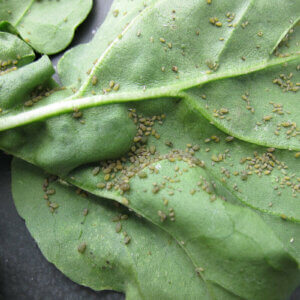
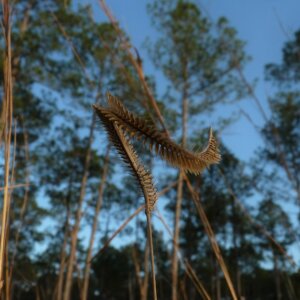









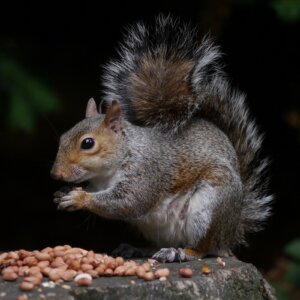



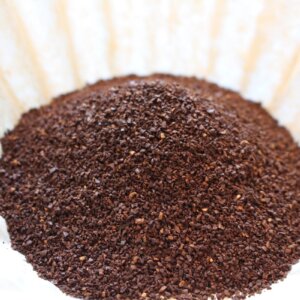
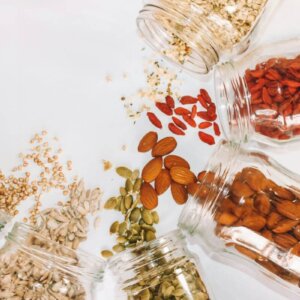










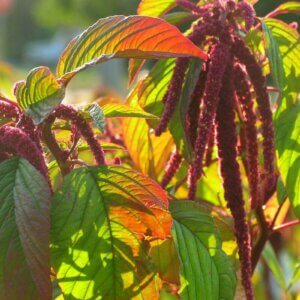








What an interesting blog post! I had no idea there were so many different types of Alaskan berries. I’m looking forward to learning more about each one!
You should do a bit more research before you publish with incorrect information/pictures. The High Bush Cranberry picture is actually some type of Sorbus species and the Rosehips sure aren’t a native Alaska species of rosehips (Rosa species).
Found a low growing berry above tree line near Juneau in early September. Berries are slightly lumpy and have small ridges. Not spherical like Alaskaense. I thought it was Vac. cespitosum but the shape is different.
Flesh is light colored, not purple. Seeds are light yellowish.